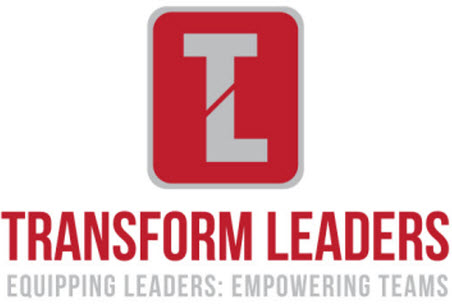
9 years ago I was in mental and emotional anguish. I didn’t know whether to leave my job to start my own business or stay and continue the work I had dedicated my life to for the last 16 years. Over the course of about 12 months I agonised over this decision.
There was one question I asked myself that helped me know the right decision. I’ll tell you what that question is later.
Decision-making is not just about facts, figures and information. The reason it is so hard is because we are often torn between competing priorities, feelings and needs.
If you have been following the previous blog posts (Go here if you haven’t read these yet – Decision Villain #1; Decision Villain #2) – you will know that we need to generate as many options as we can and then examine those options through a series of reality testing activities.
Now it is time to make a decision!
Often the decision becomes obvious through the first two stages. As you explore options and reality test, it isn’t difficult to see and decide what is the right decision.
However, there are times when it is really hard to make a decision, like the situation I described earlier. For these types of decisions we need to learn how to create emotional and mental distance because of the short-term emotions attached to the decision.
1. CREATING EMOTIONAL AND MENTAL DISTANCE
Sometimes simply letting a decision turn over in our minds, over-night or over a couple of days, is enough to give us emotional distance. Other times this only makes things worse as we oscillate between the various options, feeling stressed and second-guessing ourselves.
Suzy Welch, a business writer suggests the 10/10/10 method to help us think about our decisions within three different time frames.
- How will I feel about this decision in 10 minutes from now?
- How will I feel about this decision in 10 months for now?
- How will I feel about this decision in 10 years from now?
I didn’t realise it at the time, but I asked myself the last question, “How will I feel about the decision 10 years from now?” I took the various options for a trial run (in my imagination). Immediately, I knew I would be proud of myself if I started a new career and I would be disappointed that I took the safer option, even though there was a lot of loss in that option.
What this method allows us to do is get some emotional and psychological distance from the situation. For my situation I had a lot of years invested in leading and shaping an organisation. I also was very invested in the relationships. This meant it was really emotional to think about leaving. Without distance, those emotions can swamp us and influence us to make a poor decision.
2. SEEING THE FOREST FOR THE TREES
What my story highlights, is that as humans, we often focus more on loss than on what we would gain. One person has said, “We are more motivated to avoid loss, than move towards pleasure.” Loss aversion or status quo inertia is a very powerful force that inhibits good decision-making.
Research reveals two kinds of decision makers. Seventy-five percent of people pay more attention to managing risk than pursuing reward, and 25% focus more on obtaining reward than steering clear of risk. Where one feels fear, the other often feels excitement, and that biological difference will alter how emotions impact people’s decisions.
There is a famous story about Intel. The President, Andy Grove, when in the early 1980’s the company was dominant in computer memory and had just started to create the microprocessor. The bulk of their profit was in memory yet Japanese companies were rapidly overtaking them in terms of quality and price. The hard decision for Intel was whether to invest heavily in regaining market share by developing a better product or go after speciality markets. They were losing money as the debate raged within the company. In 1985 Groves was discussing the issue with the CEO, Gordon Moore. Grove asked an inspired question, “If we got kicked out and the board brought in a new CEO, what do you think he or she would do?”
Gordon Moore answered without hesitation; “He or she would get us out of memory”. Andy Grove stared at Moore and said, “Why shouldn’t you and I walk out the door, come back in, and do it ourselves?”
History, emotional connection and status quo are such powerful forces when making decisions with no easy or ‘right’ answer.
Through that question, Moore and Grove gained distance, intellectual and emotional, allowing them to make a difficult decision. What distance creates is the ability to distinguish the most important issues or factors at play in the decision. We are able to see the proverbial forest for the trees. A related question or approach is, “What would I advise my best friend in this situation?”
3. USE PRIORITIES AND VALUES
There is another way to make a decision when it is complex, with no simple answer – connect with your priorities and values.
When we find a decision difficult it is often that we have lost sight of our values and priorities.
When I was facing my career change decision, after I tapped into my priorities and values, quickly the decision become easier. One of my core values is growth/learning. When I asked myself which opportunity would help me live out this value, the decision became clearer.
In order to use this approach we need to know our values and their order of importance to us (A values hierarchy – our first, second and third values etc). This approach engages a different part of our mind and heart – “What type of person do I aspire to be?” “What do I want to achieve in life?”
In organisations what we see is that “small” issues arise and leaders start arguing for different approaches. When things become gridlocked and factions form, the undiagnosed issue is different priorities or values are in operation. Articulating and agreeing on the top priority allows leaders to agree on the best decision/approach to challenging situations.
In a recent strategic plan that I helped develop for a not-for-profit, we articulated operating principles to help them decide what activities and strategies they were going to pursue. It is critical that organisations gain clarity about their core priorities, principles and values. They can’t be generic, they need to be specific and clear enough to help guide decision-making.
Gaining distance from the emotions, the status-quo, the sense of loss and connecting to our values allows us to make wiser decisions that will serve us and those around us.
